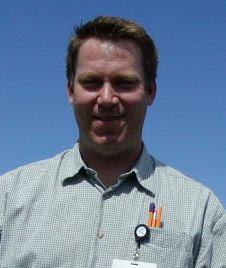Here is a lesson I created last week for my second graders in math:
Grade Level Essential Target:
1.1c Use objects and pictures to represent whole numbers including odds and evens from 0 to 1000
1.2.c Group objects by ones, tens and hundreds according to place value (for example: given 9 ones, 5 tens and 4 hundreds the student can write the number 459; given the number 459, the student can show 4 hundreds, 5 tens and 9 ones)
ISTE NETS Standard 2. Design and Develop Digital-Age Learning Experiences and Assessments (2a: design or adapt relevant learning experiences that incorporate digital tools and resources to promote student learning and creativity)
Student friendly objective: We will use objects to show numbers up to 1,000. We can use place value to help us group and count large numbers of objects.
Language Objective: We will use language that helps us work as a team. We will use writing and speaking with math words and numbers to show our answers.
Resources needed: Smart board, straws, rubber bands.
Open the lesson by reviewing counting by tens.
Begin by telling students that when we get a lot of things to count we need a good way of counting. Bring a bag of M&Ms, a deck of cards and some other items that contain many objects. Ask the students to discuss with their elbow partner something that contains a lot of objects. Give students a sentence starter: One thing that contains a lot of items is…. Put students into groups of five and dump a bag full of straws (at least 50) on the table. Tell them they will need to use complete sentences to ask questions and to help them work as a team. (“I have x straws. How many do you have?”) Ask them to work together to count the straws. Observe how the students work together and praise any examples of teamwork. After a few minutes, bring the students back together and tell them that if you have numerous objects it is easiest to count them in groups rather than one by one.
Now break out some rubber bands and start to group the straws into bundles of ten. Ask students to use polite language such as “Could you please pass me a rubber band? I need five more straws. Could we share to make a bundle?” Show the students that we will group exactly ten straws for each bundle, and then we can count by tens. Leftover straws do not get bundled. Let the students return to their groups and circulate to check with students as they proceed.
After the students have counted write the numbers for each group while counting the bundles. Review the concepts of tens and ones with students. Tell the students that if we want to count all the straws from each table group together we might even want to put together 10 bundles to form groups of 100. Use the Smart board to show place value boxes. Practice writing a variety of two and three digit numbers and call on students to identify the number of ones, tens, and hundreds. Have students use precise math terms such as, “There are x hundreds, x tens and x ones.”
Then use the blank base ten chart in the place value folder of smart board under “Mathematics”, then “Number Concepts and Operations” or search by keyword. Type in labels for the chart then from the Place Value folder use the ones, tens, and hundreds blocks to represent various numbers and have the students write the numeric value for the blocks chosen on white boards. In the video I show how to set this lesson up.
Differentiation: The lesson offers tactile and visual forms of learning. Because of the ease of manipulating the smart board manipulatives the number of place values being taught and assessed can be increased or decreased to work within a variety of zones of proximal development.
An additional lesson based on counting candy can be found here.
http://peabody.vanderbilt.edu/depts/tandl/mted/faculty/Mted3250/HtmlPapers/Diane%20&%20Michael.html

